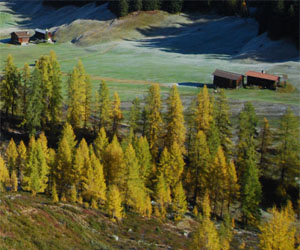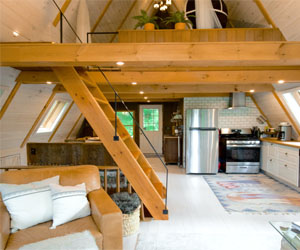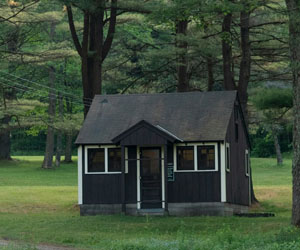


Building Sustainable Communities For A Better Future

In a world increasingly focused on environmental sustainability and community well-being, the concept of eco-villages has gained significant attention. An eco-village is a community designed with the principles of ecological and social sustainability at its core. These intentional communities prioritize low environmental impact, self-sufficiency, and a strong sense of connection among residents. Here, we explore the principles and benefits of eco-villages.
Principles Of Eco-Villages:
Sustainability: Eco-villages are built on principles of sustainability. This encompasses eco-friendly housing, renewable energy sources, and a focus on reducing waste and energy consumption. Sustainable farming and food production are also key elements, with many eco-villages aiming to be self-sufficient in terms of food.
Low Environmental Impact: These communities strive to have a minimal impact on the environment. This often means eco-friendly construction, waste reduction and recycling, sustainable water management, and the use of renewable energy sources like solar panels or wind turbines.
Community And Connection: A strong sense of community is a hallmark of eco-villages. Residents often engage in decision-making processes together and foster a culture of shared responsibility. This sense of connection promotes social well-being and harmony.
Education And Learning: Many eco-villages emphasize learning and education, particularly in the areas of sustainability and eco-conscious practices. Workshops, seminars, and communal learning opportunities are common.
Cultural And Artistic Expression: Creativity and cultural expression often flourish in these communities, with residents embracing arts, music, and cultural activities that promote a sense of belonging and fulfillment.
Benefits Of Eco-Villages:
Environmental Stewardship: Eco-villages are on the forefront of environmental stewardship. By living in a sustainable, low-impact manner, residents reduce their ecological footprints and serve as models for sustainable living for the broader community.
Sustainable Living: These communities demonstrate that it is possible to live a comfortable and fulfilling life while minimizing environmental impact. They showcase the practicality of eco-conscious technologies and practices.
Strong Social Bonds: Eco-villages prioritize strong social bonds and a sense of community. Residents often share responsibilities, resources, and a commitment to a shared vision. This enhances the overall well-being of community members.
Personal Fulfillment: The focus on creativity and cultural expression in eco-villages fosters personal fulfillment and a sense of purpose. Residents can explore their passions and talents within a supportive environment.
Education And Knowledge Sharing: Eco-villages serve as centers for education and knowledge sharing. They host workshops, offer sustainable living training, and provide resources for residents and visitors alike to learn about eco-conscious practices.
Resilience And Self-Sufficiency: These communities often emphasize resilience by being self-sufficient in terms of food, water, and energy. This can be vital in times of external stress, such as economic downturns or natural disasters.
Eco-villages offer an inspiring vision for the future, demonstrating that sustainable, community-centered living is not just an ideal but a practical and attainable reality. They act as microcosms of the changes needed to address today's environmental challenges and promote a more harmonious, interconnected way of life. As society continues to grapple with ecological issues and the importance of strong, supportive communities, eco-villages provide a compelling model for a better, more sustainable future.
Maximize Your Space And Minimize Clutter
 2. Wall-Mounted Shelves And Storage
2. Wall-Mounted Shelves And Storage
Utilize vertical space by installing wall-mounted shelves and storage units. These not only provide additional storage but also free up floor space, making your room feel more open and less cluttered.
3. Under-Bed Storage
Your bed can be more than just a place to sleep. Consider using the space underneath for storage. Under-bed drawers or bins are excellent for storing clothing, shoes, and other items you don't use daily.
4. Compact Kitchen Appliances
In a small kitchen, compact appliances can save valuable counter and cabinet space. Look for smaller refrigerators, slim dishwashers, and mini appliances that fit your needs without dominating your kitchen.
5. Fold-Down Tables
Fold-down tables are perfect for small dining areas or home offices. They can be easily stowed away when not in use, creating more room for everyday activities.
6. Pegboards And Hooks
Pegboards and hooks can be a game-changer for organizing and storing items like kitchen utensils, tools, or office supplies. These space-saving solutions keep your essentials within arm's reach without cluttering up drawers or countertops.
7. Magnetic Strips
In the kitchen, magnetic strips mounted on the wall can hold knives and metal spice containers, saving counter and drawer space. They're not only functional but also add a unique design element to your kitchen.
8. Over-The-Door Storage
Maximize closet and bathroom space by adding over-the-door organizers. These handy storage solutions can hold shoes, accessories, cleaning supplies, and more, making efficient use of often underutilized space.
The Art Of Seasonal Planting
 The Importance Of Seasonal Planting
The Importance Of Seasonal Planting
Seasonal planting is more than just a tradition; it is a science and an art that has been practiced for generations. It recognizes the fact that different plants thrive in different seasons due to variations in temperature, daylight, and weather conditions. By aligning your garden with these natural rhythms, you can optimize plant growth, health, and yield.
Key Benefits Of Seasonal Planting
Optimal Growth Conditions: Seasonal planting ensures that your crops receive the right balance of sunlight, temperature, and moisture at each stage of their growth. This leads to healthier and more productive plants.
Crop Diversity: Planting seasonally allows you to diversify your garden throughout the year. Different seasons support various plant families, from cool-season greens in spring to warm-season fruits in summer.
Pest And Disease Management: Seasonal changes can disrupt the life cycles of garden pests and pathogens. By rotating your crops seasonally, you reduce the risk of infestations.
Soil Health: Seasonal planting helps maintain soil fertility by preventing the depletion of specific nutrients. Different plants have varying nutrient needs, and rotating them can help your soil recover.
Planning A Seasonal Garden
Know Your Climate: Understand your local climate, including temperature ranges, rainfall patterns, and frost dates. This information is essential for determining which plants thrive in your area during each season.
Create A Planting Calendar: Design a planting calendar that outlines what to plant and when. Consider the average date of the last spring frost and the first fall frost, as these are crucial markers for selecting plants.
Navigating A Changing World
 1. Climate Change
1. Climate Change
Climate change, primarily driven by the emission of greenhouse gases such as carbon dioxide and methane, is arguably the most urgent environmental challenge. It results in rising global temperatures, melting glaciers, sea-level rise, and an increase in the frequency and severity of extreme weather events. Climate change has far-reaching impacts on agriculture, water resources, biodiversity, and human societies, with vulnerable communities often bearing the brunt of its consequences.
2. Biodiversity Loss
The loss of biodiversity is a global crisis with ramifications for ecosystems and human well-being. Habitat destruction, pollution, overfishing, and invasive species all contribute to the decline of species and ecosystems. The loss of biodiversity threatens food security, disrupts ecosystems' ability to adapt to environmental changes, and compromises the availability of life-saving medicines derived from nature.
3. Air And Water Pollution
Air and water pollution continue to affect the quality of our environment and public health. Pollutants released from industrial activities, transportation, and agriculture contribute to air pollution, leading to respiratory diseases and other health issues. Water pollution, often caused by untreated sewage, agricultural runoff, and industrial discharges, contaminates water sources, harming aquatic ecosystems and endangering drinking water quality.
4. Deforestation
Deforestation, primarily driven by agricultural expansion, urbanization, and illegal logging, results in the loss of vital forests worldwide. Forests play a critical role in sequestering carbon, preserving biodiversity, and regulating local and global climates. The loss of forests contributes to carbon emissions, soil degradation, and the disruption of countless ecosystems.
 Soil Testing: Start with a soil test to determine its pH level and nutrient content. This guides you in making necessary adjustments.
Soil Testing: Start with a soil test to determine its pH level and nutrient content. This guides you in making necessary adjustments.
Clear The Area: Remove any weeds, rocks, or debris from the planting area to provide a clean slate for your garden.
Amend The Soil: Depending on the soil test results, amend your soil with organic matter like compost, well-rotted manure, or peat moss. These materials improve soil structure and nutrient content.
Till The Soil: Use a tiller or a spade to mix in the amendments and break up compacted soil. The goal is to create a loose, well-aerated soil structure.
Mulch The Surface: Apply a layer of organic mulch to conserve moisture, regulate soil temperature, and suppress weed growth.
Maintain Soil Health: Regularly test and amend your soil as needed. Crop rotation and cover cropping can also help maintain soil fertility.
Water And Monitor: After planting, water your garden beds appropriately, keeping the soil consistently moist but not waterlogged. Monitor plant health for signs of nutrient deficiencies.
The Dawn Of Intelligent Living
 Smart Living At Its Best
Smart Living At Its Best
Future-ready homes are characterized by their integration of cutting-edge technology, automation, and intelligent systems. These homes use the power of the Internet of Things (IoT) to create an interconnected ecosystem, where devices and appliances can communicate and work together seamlessly. From lighting and climate control to security and entertainment, every aspect of daily life is optimized for convenience and efficiency.
Energy Efficiency And Sustainability
A central focus of future-ready homes is sustainability. These homes incorporate energy-efficient solutions that not only reduce utility costs but also minimize environmental impact. Solar panels, smart lighting, and advanced insulation systems are just a few examples. Future-ready homes can harvest and store energy, monitor usage, and make real-time adjustments to conserve resources.
Security And Peace Of Mind
Security is paramount in future-ready homes. Advanced surveillance systems with high-resolution cameras, motion detectors, and smart locks provide unparalleled protection for homeowners. These systems can be monitored and controlled remotely through smartphones, giving homeowners peace of mind and the ability to respond swiftly to any security concerns.
Customization And Personalization
Future-ready homes are designed to adapt to the needs and preferences of their inhabitants. For example, intelligent thermostats learn your temperature preferences and create customized schedules. Personal virtual assistants, such as Amazon's Alexa or Google Assistant, respond to voice commands to control various functions within the home, including lighting, music, and climate control. This level of personalization creates a truly unique living experience.





